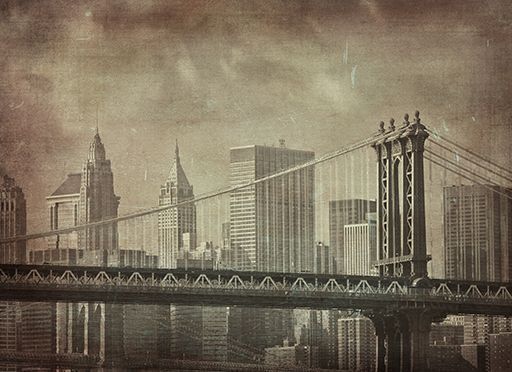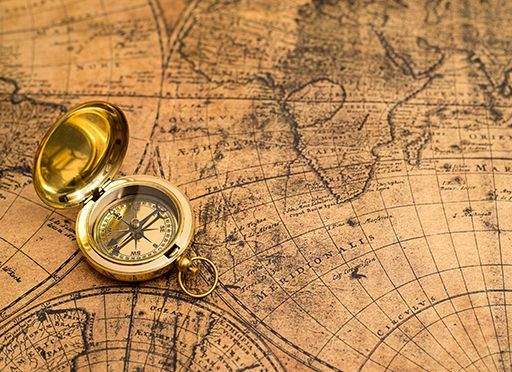Richard Vague provides a detailed and readable timeline of US economic history from before the American revolution to last week.

Timeline of Economic History
Richard Vague – Pennsylvania’s secretary of banking and securities – provides a wonderfully illustrated history of business in the United States from the 1700s to today. Vague breaks US history into various eras, weaving military, political and social history throughout. His sidebars feature the economic contributions of women and people of color. Throughout, tables chart the growth and decline of industries and of America’s dynastic families.
United States’ Dominance
Starting in Virginia almost three centuries ago, real estate anchored America’s fortunes. Businessmen and landowners wrote the US Constitution, which addressed taxes, disputes and regulations.
The Bank of the United States opened in 1791, spawning new banks nationwide. Southern cotton – a commercial crop made possible only through enslaved people’s suffering – fueled trade between Britain, Africa and the New World.
The founders who wrote the Constitution were land and business owners, and they made certain that it ensured the sanctity of contracts and private property.Richard Vague
The federal government displaced Native Americans, and the Public Land Act of 1796 allowed settlers to purchase land cheaply. The 1803 Louisiana Purchase triggered exploration, exploitation and land speculation.
Rail, Canals and Telegraph
The 1794 invention of the cotton gin and the mechanical mill transformed the southern and northern economies, respectively. By 1808, America outlawed importing enslaved people.
Coal mining began in Pennsylvania and, by 1850, America ran on coal.
The nation grew to 31 million people by 1859; land and farming dominated the economy. Acquiring Texas, California and Oregon enlarged America by two-thirds.
Railways grew nationwide through the early 1800s. The 1835 opening of the Erie Canal connecting Lake Erie to the Hudson River meant that goods that had needed three weeks to ship at a cost of $120 now took six days and cost $6.
As the United States emerged from its early 1840s economic depression, it witnessed one of the great bursts of business activity in American history.Richard Vague
Expansion added to the misery of Native Americans. Telegraph and railroad lines extended coast to coast as the Gold Rush sparked migration, leading to California’s statehood in 1850.
Post-Civil War
The post-Civil War era created enormous wealth. The nation grew from 31 million people to 47 million from 1860 to 1877. Andrew Carnegie revolutionized the steel industry, which supplied the rail industry.
The Civil War captains, colonels, lieutenants and generals would become the managers, owners and executives of the country’s massive postwar businesses.Richard Vague
Oil production expanded to 26 million barrels annually by 1880, and kept growing. Massive cattle ranches spurred the meatpacking industry in Chicago. A few families had accumulated a disproportionate share of the wealth; Mark Twain branded this era as “The Gilded Age.”
Industrialization
Electric lights, recording technology and AC current fueled the late 1800s electronics industry. Coca-Cola appeared in 1886. The telephone spawned AT&T in 1885. IBM’s founders launched the company in 1924.
In the early 1900s, the nation relaxed its tariffs, and trading exploded. Vast oil fields in the 1890s fueled the Standard Oil Company and led to decades of US dominance in oil and gas. Rail remained the primary industry – more than twice as large as agriculture.
America built outward and upward – and underground, with the country’s first subways and elevated lines.Richard Vague
In 1903, the Wright brothers made the first powered flight. The first skyscrapers appeared in 1901, with 50-story buildings rising by 1909. New York City dug its first subway line in 1904. The first radio show broadcast in 1906 led to the Radio Corporation of America (RCA) and the National Broadcasting Corporation (NBC). The cinema industry launched in 1910. Tens of thousands of Black Americans migrated to northern cities seeking better opportunities.
Henry Ford created the assembly line. The 1913 Federal Reserve Act created a federal banking system, and the Underwood Tariff Act of 1913 established the first income tax, at 1%. In 1902, the United States took over the Panama Canal project.
Prohibition created a vast black market, giving new life and purpose to organized crime, which scarred America. Prohibition may well have increased American alcohol consumption.Richard Vague
The dollar became the global currency by the end of World War I. In 1920, Prohibition banned drinking, but spawned organized crime. Baseball, football and golf grew quickly.
By 1920, the US population reached 160 million, following immigration from Russia, Central Europe, Italy.Walt Disney created Mickey Mouse, insulin was invented, and Charles Lindbergh crossed the Atlantic in an airplane. The stock market quadrupled in value. But on October 29, 1929, the stock market lost $30 billion of value in a day. FDR’s New Deal led to Social Security in 1935.
World War II was a global tragedy that saw more than 50 million people perish. But for US business, war spending jolted the economy forward. Richard Vague
The United States joined World War II in 1941, producing more than a million planes, tanks, ships and jeeps, and creating 17 million jobs.
The atomic bombs ushered in the nuclear age – a renaissance in science and technology.The United States became the world’s undisputed economic leader.
Late 1950s – Early 1970s
The birth control pill became available in 1960. Russia’s Sputnik satellite spurred President John F. Kennedy’s mission to land men on the moon.
The Vietnam War spawned protests. Richard Nixon resigned and wars raged in the Middle East. Oil prices surged. Japanese cars and electronics challenged America’s hegemony. Low growth and hyperinflation produced stagflation.
In the 1980s, a real estate bubble burst amid the savings and loan crisis. Nuclear power fizzled due to accidents and high costs. Oil prices dropped along with the stock market in the late 1980s.
The Digital Age
The internet economy came apart with the dot-com crash of 2000. Amazon, Facebook, Google and Apple’s return led its resurgence. Reckless mortgage lending led to loan defaults in 2007 and to 2008’s Great Recession.
The NASDAQ index, which had barely nudged over 1,000 in 1995, reached a high of over 5,000 in 2000, fueled by margin debt. It was called the ‘dot-com bubble’.Richard Vague
The connectivity boom fueled a sharing and gig economy. Mapping the human genome and new technologies promise a future of invention.
Comprehensive Detail
The nature of this summary cannot do justice to Vague’s absurd, almost nerd-like passion for every twitch, massive movement and telling sidetrack in American economic history. But Vague is not a nerd; he is a wise, informed historian with a compassionate perspective who never forgets the pains Black and Native Americans and the common working person suffered to build the US juggernaut. Most valuable of all is Vague’s timeline detailing centuries of cause and effect, and the way he ties events to family rivalries both petty and significant. His book is a must for any business student and anyone interested in American history.
Richard Vague also wrote The Next Economic Disaster: Why It’s Coming and How to Avoid It; The Case for A Debt Jubilee and A Brief History of Doom: Two Hundred Years of Financial Crises.






